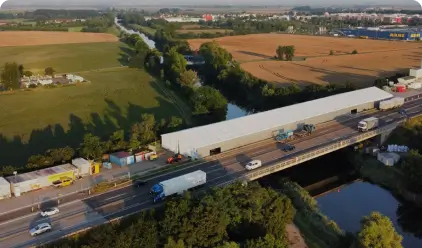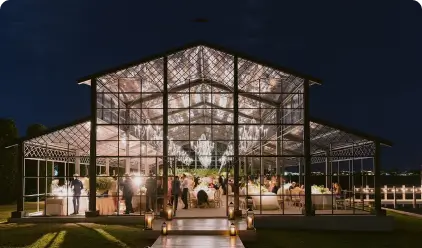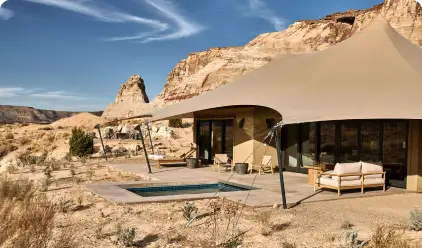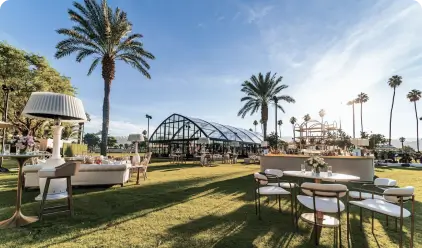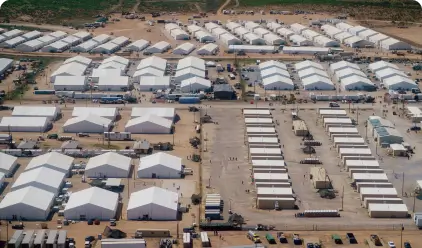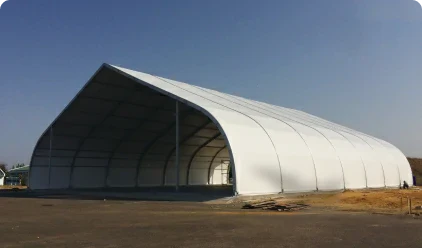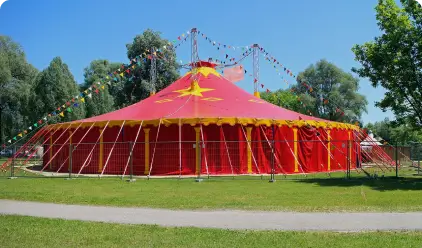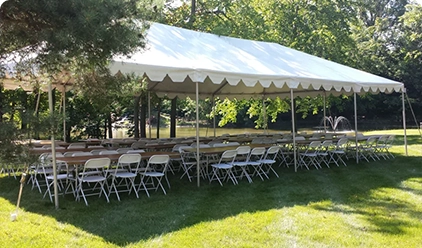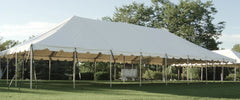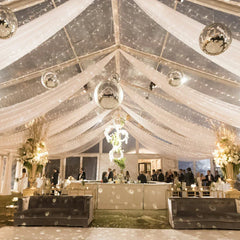Tent Sidewalls: Does It Matter and How to Choose
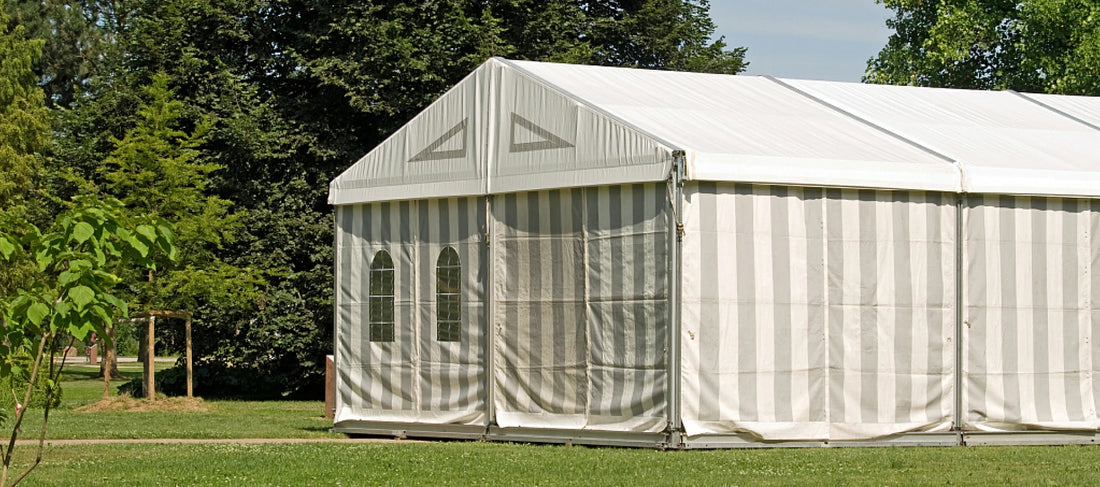
When designing or building a tent, the tent sidewalls are an important part of the structure that cannot be ignored. The main frame of the tent can only provide partial protection, and the tent sidewalls need to supplement it.
When it rains, the tent top can provide protection from rain, but when the rain drifts towards the tent from the side, the sidewalls take on another part of the shielding effect.
In this way, the role of the sidewalls is self-evident. When choosing the tent sidewalls, it is necessary to judge a variety of factors and understand them to better choose those suitable for the scene's use.
Why Do Tent Sidewalls Matter?

When holding an event outdoors, if without sidewalls, the sun shining from the side will directly shine on the participants; if it rains, the rain from the side will directly drift into the tent. If it is a large commercial event, the lack of sidewalls will not only fail to protect guests from the weather but also prevent the event's privacy from being guaranteed.
The protection and shielding role of the sidewalls is indispensable, and a suitable canopy tent with sidewalls will look more beautiful.
What Are the Benefits of Tent Sidewalls
The benefits of tent sidewalls are obvious, but they are not just for protection. In practical applications, sidewalls have many other benefits.
Protect from Wind and Rain
Whether it is used for events or storage, the sidewalls can provide an important supplement to the overall shelter of the tent.
When the party atmosphere reaches its peak, it suddenly rains heavily, but under the protection of the sidewalls, the tent becomes an enclosed space, and there is no need to worry that the rain will delay the party.
When the goods are neatly placed in the tent, a strong wind suddenly blows, but with the protection of the sidewalls, your goods will not be damaged. The role of the sidewalls in shielding from wind and rain is evident.
Keep Privacy
When holding private parties or internal company events, ensuring the sense of security and privacy of outdoor activities is the most important, especially when using a tent. Without sidewalls, the interior of the tent is easily visible from the outside, and there is no privacy at all.
Fortunately, adding sidewalls can effectively block outside prying eyes. Activists can have a better sense of security.
Prevent Insects
The insect-proofing benefits of the sidewalls are easy to understand. Without the sidewalls, any insects can enter and exit the tent at will from both sides, but with the barrier of the sidewalls, all this will become extremely difficult. Without the trouble of insects, the space inside the tent will become safer and more comfortable.
Control Interior Temperature
The appropriate temperature in the tent is an important basis for ensuring the smooth progress of activities in the tent. In winter, the tent heater is used to heat a party tent. At this time, the sidewalls can prevent heat loss.
In summer, the air conditioner or exhaust fan is used to reduce the temperature in the tent. The sidewalls can prevent hot air from entering and block the loss of cold air.
If you want to control the temperature in the tent, the existence of sidewalls is essential. The sidewalls make the interior of the tent an ideal space for temperature control.
Enhance Aesthetics
The sidewalls are not only functional but also very beautiful. The white sidewalls are elegant and low-key, with just the right amount of refinement. The fully transparent sidewalls have high reflectivity and transparency. When the sun shines on the sidewalls, they appear very bright.
Structurally, the sidewalls prevent the two sides of the tent from appearing empty, forming a seamless whole, which perfectly interprets the art of architecture.
What Types of Tent Sidewalls Are Available

Sidewalls will vary depending on the material and usage scenarios. A suitable sidewall can greatly reduce costs while meeting appearance and functional requirements.
Below are the most popular types of tent sidewalls. Learn the differences and choose the right option for your preference.
Solid Sidewalls
The solid sidewall has no gaps or holes and is made entirely of solid materials. Solid walls are effective in protecting privacy, completely blocking the outside world's view. At the same time, solid walls can well meet the needs of users with high winter warmth requirements.
Window Sidewalls
Window sidewalls can be used in many event tents, such as parties, exhibitions, and trade shows. These tents need to maintain air circulation. Good air exchange inside and outside the tent is conducive to improving the air quality inside the tent.
It ensures the smooth progress of the event and giving visitors a better experience. Closing the windows when not needed is simple and practical.
Clear Sidewalls
Clear sidewalls are also used in many event tents, such as clear top tents for weddings. Clear sidewalls work well with clear top tents.
The atmosphere of a wedding is festive and peaceful, and clear tent sidewalls give the wedding a sense of being in harmony with nature.
During the day, natural light penetrates the tent, making the newlyweds and guests feel the vitality of nature; at night, they can also feel the tranquility of nature and the starry stars in the sky. Such a wedding is novel, impressive, and can leave good memories.
Custom Sidewalls
You may need to customize your tent, whether it is for advertising or to increase team cohesion. Then customizing the tent sidewall will be a good choice.
Whether it is the material of the sidewall, the color of the sidewall, or even the spray-painted pattern, custom sidewalls can be achieved, which can greatly improve customer satisfaction.
How to Choose the Right Tent Sidewalls
If you want to choose the right side walls for a newly purchased tent, or if you want to reinstall the new sidewalls, how to choose the right tent sidewalls? Here are some tips to help you choose your sidewalls.
Consider Scenarios of Use
When choosing a sidewall, you need to ask the following questions first: What is the local climate like? What do you value more, privacy or aesthetics? What do you want to use a tent with sidewalls for? If you have already considered these concerns, then check out the details below to make your choice.
- Weather
Weather affects whether the event can be carried out smoothly. If the wind and snow are strong at the site of the tent, you can choose solid sidewalls; if the weather is fine, you can choose window sidewalls or clear sidewalls.
Sheltent's tent has a max wind load of 120km/h and a snow load of 51kg/㎡. We also offer customization of the thickness of the sidewalls to keep safe and stable when facing greater wind and snow.
- Use of the Sidewalls
Storage tents and industrial tents can choose solid sidewalls; exhibitions and trade shows can choose window sidewalls, and weddings can choose clear sidewalls for aesthetic needs. If these three types of sidewalls cannot meet your needs, you can choose custom sidewalls.
- Your Peference
If you pay attention to the protection of privacy, solid sidewalls are more appropriate. But in terms of making the tent beautiful and bright, or keeping the tent ventilated, clear sidewalls or window sidewalls are better suited to the needs.
If you want to make the sidewalls have more uses through personalized customization, you can consider customized sidewalls.
Choose the Right Size of the Sidewalls
You need to measure the height and distance of the eaves of the gable and side walls. Depending on your actual needs, you can buy four sidewalls to cover the entire tent, or three, leaving one side wall for entertaining guests. If the sidewalls are not the right size, there may be wind leakage and water leakage.
Ensure that Sidewalls Fit Your Tent Perfectly
Sidewalls that fully fit the tent will prevent air leakage and will not give bugs room to enter the tent. If it is a solid sidewall for privacy protection, the sidewalls that fully fit the tent can maximize this requirement. If the sidewalls are customized, it is even more necessary for them to fully fit the tent to maximize the overall appearance of the tent.
Compare Sidewall Materials
The materials of the sidewall are generally: PVC, nylon, canvas, PE, etc.
- Nylon sidewalls are good for wear-resistant, not easily damaged, and have a long service life, but nylon has a high water absorption rate and is easily affected by moisture.
- Canvas is tough and durable, but its texture is complex and difficult to keep clean, especially after washing. It is also difficult to restore the original texture, and long-term use will cause aging phenomena such as hardening and yellowing of the material.
- PE sidewalls are highly tough and have good corrosion resistance, but theyare easy to deform at high temperatures and have limited temperature resistance.
- The sidewall of the Sheltent is made of advanced white double-layer PVC-coated fabric, which completely isolates ultraviolet rays. It is also waterproof, windproof, and flame-retardant and has long-term service life.
Why Choose Sheltent Canopy Tents with Sidewalls For Your Event
At Sheltent, you can find tents with sides, such as Keder tents. Sheltent's keder tent is completely sheltered by the sidewalls around it, and you can choose one type of sidewall from those mentioned above according to your needs.
With sidewall, you wouldn’t no longer be concerned about weather protection for your events. It is ideal for commercial parties, weddings, corporate events, and storage.

To meet your specific needs, Sheltent provides customized sidewalls for your event tents. Our tent sidewalls are made of PVC-coated fabrics, the same as tent tops, which have excellent properties such as UV isolation, waterproofing, windproofing, flame retardant, and long-lasting bonding.
Sheltent has established a strict quality control system. From raw material procurement to final product delivery, each link is supervised by a professional quality inspection system. Sheltent's tents and sidewalls, with their excellent performance, ensure the smooth running of your event.
Conclusion
Through the whole article, you have realized the importance of tent sidewalls. After understanding the benefits of sidewalls, you have a clearer understanding of their irreplaceable role. After that, starting from the several types of sidewalls available, you have gradually learned how to choose the sidewall that suits your tent. But action speaks louder than words.
If you want to purchase a tent with sidewalls or buy new sidewalls, why not contact Sheltent now?
FAQs About Tent Sidewalls
Are Tent Sidewalls Durable?
Yes, it is very durable. The side walls of Sheltent also use PVC-coated fabric. This design is fireproof, mildewproof, and waterproof and has a service life of 5 years.
How to Maintain Tent Sidewalls?
The tarpaulin can be cleaned with a weak alkaline detergent. To avoid damage, avoid excessive scratching with sharp, hard objects. After cleaning and drying, you should store a tent correctly and check it regularly.




























